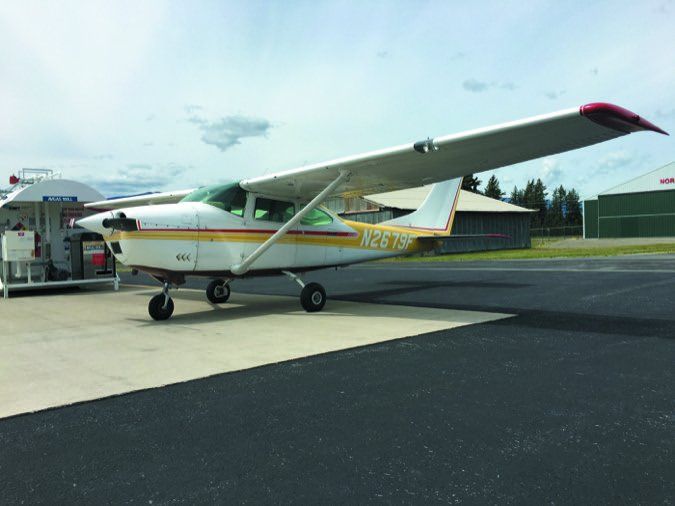It’s easy to see why the venerable Cessna 182 Skylane is an easy choice for a wide variety of missions. From the oldest Skylane to the current all-glass model that flirts with $500,000, a 182 has good hauling capability, good dispatch reliability and a relatively comfortable cabin, plus maintenance shops know how to work on it. That covers a lot of bases.
Except for its intolerance for mismanagement on and around the runway—giving it a not so respecful ranking in the NTSB reports—we suspect buyers are comfortable with long-term Skylane ownership. For many, it’s as far up the pecking order as they’ll go in their flying careers.
These days, you can buy a 182 with a full G1000 glass panel and a luxe interior for a price in the high $300Ks. A big investment, to be sure, but far less money (and far less speed) than a new Cirrus SR22, as one example.
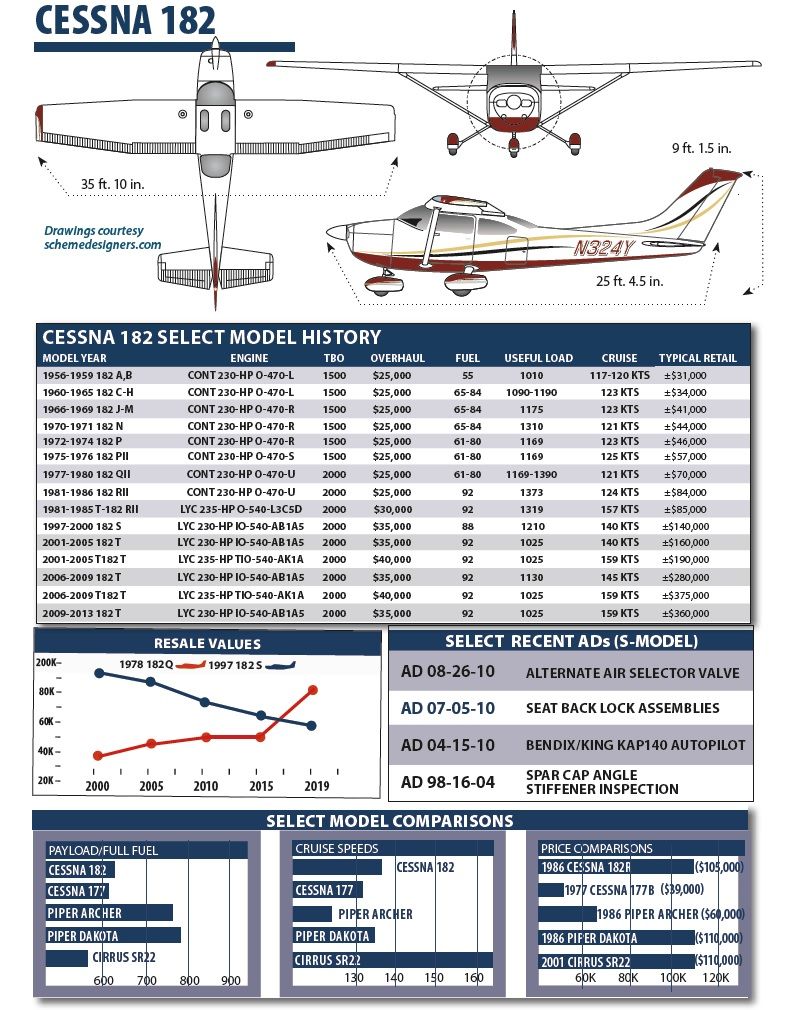
Model History
Wind the clock back to 1956 to reach the beginning of the 182 evolutionary history. The fact that it looks like a giant Skyhawk which itself looks like an inflated 150 shows that Cessna just did what it does best: It built on its experience with previous designs and scaled them up. The 182 evolved from the 180 taildragger, so Cessna added the tri-gear, redesigned and relocated the exhaust and reworked the fuel vent system. Wet wings were used to hold fuel.
With the new gear, the 182 developed a nose-heavy tendency and Cessna never did sort this out.
Even new ones require deft trimming or the lazy pilot risks smashing the nosegear into the runway and crow hopping down the strip. It’s not unusual to see an older 182 with repaired gear and firewall due to a nose prang.
When the airplane appeared in 1956, the average price was just under $17,000. That’s equivalent to about $158,000 in 2019 dollars. Obviously, given the price of the new 182T, aircraft prices have far outstripped inflation.
In the first 182s, power was provided by a 230-HP Continental O-470-L, an engine that proved to be such a worthy choice that some variant of it was retained until the airplane went out of production in 1986. The engine remains easily overhaulable, for prices under $30,000.
With its straight tail and windowless back, the original 182 looks like an antique, but Cessna soon sleeked it up with a rakish tailfin and the classic rear window everyone loves. Gross weight was 2550 pounds, compared to the modern Skylane max takeoff weight of 3110 pounds. (More on that later.)
Cessna embarked upon a continuing improvement program, introducing new model designations every couple of years. The 182A saw redesigned gear with a wider track and a lower stance, with the mains 4 inches shorter and the nosegear 2 inches shorter. The 182A got an external baggage door and a 100-pound higher gross weight.
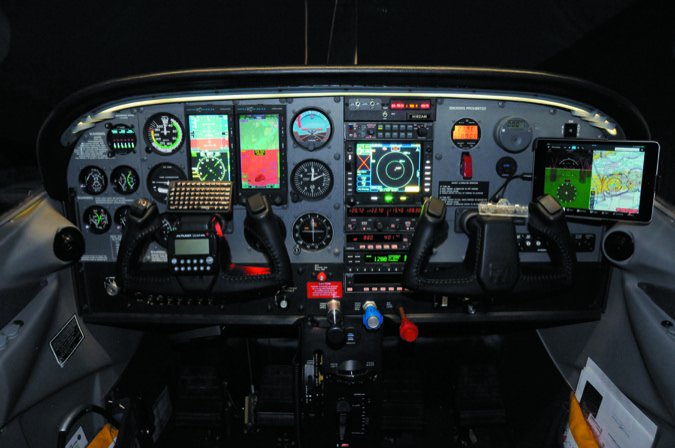
In 1958, the Skylane name was applied—prior to this, the airplane was simply called the 182—and a deluxe version with wheel pants, standard radios and full paint instead of the trim over bare aluminum bettered the basic 182.
The 182B, with cowl flaps, came out in 1959. A swept tail was added in 1960 to make the 182C; it was basically a styling move, since the swept tail degraded spin recovery and reduced rudder power. The gear continued to be a problem, so in 1961, it was lowered again, by another 4 inches, on the 182D.
As it did with other models, Cessna put a rear window (Omni-Vision) on the airplane in 1962, with the 182E. This airplane was a significant upgrade over the earlier 182s and these are often thought of as “modern” Skylanes. The fuselage was widened 4 inches and the cabin floor lowered by nearly one inch to make more interior room.
Electric flaps became standard, the panel layout was updated and the adjustable stabilizer of the original gave way to a trim tab. The gear was beefed up (again) and the gross weight was boosted to 2800 pounds. A different engine variant, the O-470-R, was fitted. The 182E could carry auxiliary fuel, which raised the capacity to 84 gallons.
Cessna also made changes that weren’t as obvious. To save weight, it used thinner aluminum for the skins and converted from sheet aluminum to roll aluminum, which was cheaper.
That also yielded an airplane with more surface imperfections, which ended the days of polished metal airplanes. Full paint jobs became standard, to hide the dimples. The new airplanes were only 10 pounds heavier than the old ones but performance actually suffered, with reduced climb, takeoff performance and service ceiling.
The 1963 182F sported a thicker, one-piece windshield and back window, a standard T-panel and an increase in horizontal stabilizer span of 10 inches. Flap pre-select also became standard. From the F model forward, until the S arrived in 1997, changes were less dramatic. The G model had an available kiddie seat for the baggage bay, while the 182H got an alternator to replace the generator.
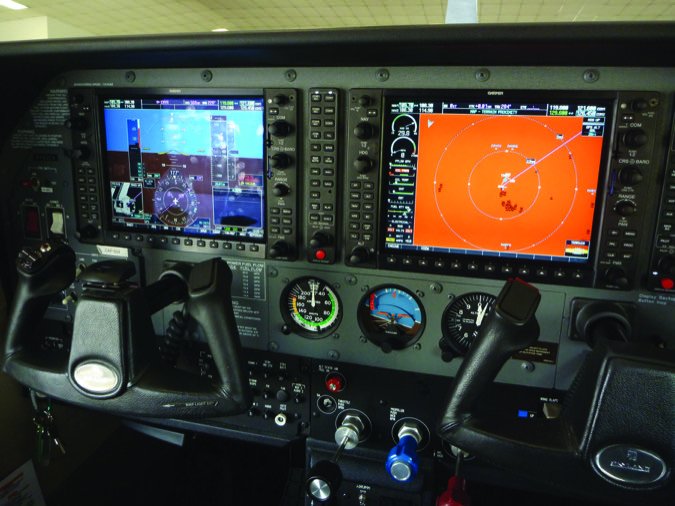
Turbocharging, New Era
The next significant upgrade was with the 1970 182N model. Gross weight was increased to 2950 pounds and the spring-steel gear was swapped for tapered tubular steel legs that allowed more fore-and-aft movement.
Track was widened again, to 13.5 feet, improving ground handling somewhat. In 1972, a leading-edge cuff was added to the wing to improve low-speed handling, resulting in the 182P, a variant that stayed in production through 1976. The dorsal fin was extended and the cowling was shock mounted.
In 1981, the 182R got another gross weight boost to 3100 pounds and an increase in standard fuel capacity, to 88 gallons, stored in wet wings. The bladders, which had been a problem, were dropped in 1978. Cessna also switched over to a 28-volt electrical system. A turbocharged version was added to the line in 1981, the T-182RII, powered by a Lycoming O-540 producing 235 HP. Production ended in 1986 with the 182R.
In 1997, when Cessna reentered the market, it introduced a newly retooled Skylane for the next century. The changes were substantial, some cosmetic, some not. The biggest change was dropping the reliable O-470 for a 230-HP Lycoming IO-540-AB1A5; no surprise there, since Cessna and Lycoming share the same parent company, Textron.
But the change improved one thing. The O-470s were quite susceptible to carb icing and the injected Lycoming solved that. But like the O-470, the Lycoming is a bit of a fuel hog.
Further, the Lycs are known for lunching cams at the mid-time point, which the TCM engines don’t typically do. Also, the Continental is a smoother-running engine, in our view.
Cosmetically, Cessna did away with the old Royalite instrument panels, replacing them with painted metal. The interior—seats and cabin panels—is much improved, as is the instrumentation. Interior surfaces are now treated with epoxy-based anti-corrosion materials.
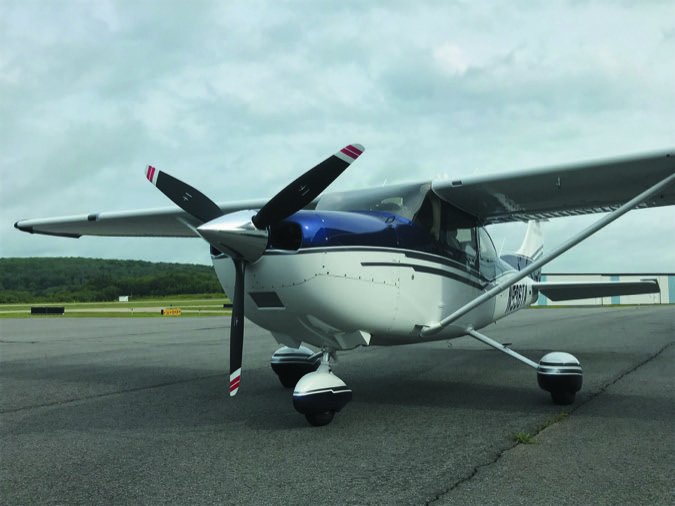
The latest 182 also has sealed wet wings, not bladders, making us wonder if owners will encounter leaks as the sealants age, as happens to Mooney owners. To get water out of the system, the airplane has no fewer than 12 separate drains, five on each wing tank and two at the bottom of the cowling. Although gross weight of the airplane is 3100 pounds, its typical empty weight is substantially higher than earlier models so it carries less than, say, an early 1980s RII. Speedwise, the normally aspirated model is respectable, cruising at just under 140 knots on 16 to 17 GPH. One reader told us the turbo 182 is capable of the mid-160s (knots) in the teens.
Maintenance wise, the 182S has proved the target of a number of Cessna service bulletins, with most of the work being covered under warranty. Thus far, we’ve heard no significant beefs related to unusual maintenance problems. The BendixKing avionics in the new Skylane (172 and 206, too) turned out to be hugely problematic. So much so that Cessna eventually switched to Garmin’s G1000 and never looked back.
Cessna teased the market with the $530,000 182 JT-A diesel-engine model, but ultimately put the program on hold indefinitely. Test aircraft have flown with the 227-horsepower SMA SR305 turbocharged engine, but a turbocharger failure (resulting in an off-field landing) seemed to be the beginning of Cessna’s FAA certification troubles. Worth noting is this engine has operated pretty well under European approval.
Textron currently offers the G1000-equipped 182T at a base price north of $500,000.
Market Survey
The market may have been more well delineated when the 182 appeared but it’s a jumble now. There are so many used and new airplanes available, it’s hard to know what to compare the 182 to. The Skylane still offers lots of interior space and an unusually flexible payload/range combination that explains its enduring appeal.
Late-model Skylanes have depreciated to the point that a 1997 S model can be had for $135,000 or less. That’s a good value when you consider that one 10 years older—a lesser airplane, in our view—sells for roughly half that.
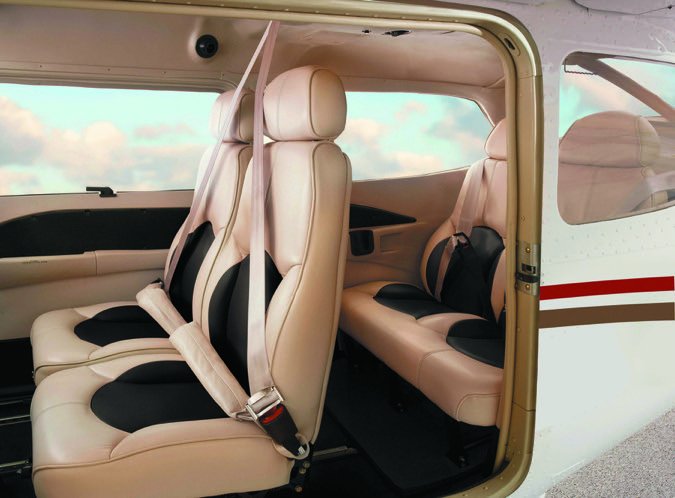
For equivalent capability, buyers may or may not favor Cessnas over Pipers. An average-equipped 1979 Skylane will fetch about $71,000 while an early 1980s Piper Dakota has held its value, bringing as much at $110,000, despite the fact the Cessna cost less when new.
Which Skylane model? That depends on your budget. As noted, the latest models have started their depreciation slide and are looking to be better values than ever. These are well-equipped airplanes and are quieter and more comfortable than the earlier Skylanes.
For a real steal, look for 2005 models with G1000 suites for prices in the mid-$170Ks or less. But caveat emptor. Some aircraft haven’t been upgraded to WAAS (the upgrade cost is staggering), creating several problems, including the ability to shoot a modern GPS approach, plus the ADS-B position source dilemma, since WAAS is required.
If you’re going older, most buyers seeking a practical, use-it-often airplane won’t want a museum piece, so that argues for a 182E or later. If your budget allows up to $90,000, the 1981 T-182 strikes us as a better combination of speed, value and hauling ability than any other airplane we can think of. You might have to invest in modern avionics, or ones to your liking. This could run an additional $50,000—or more—for a ground-up upgrade.
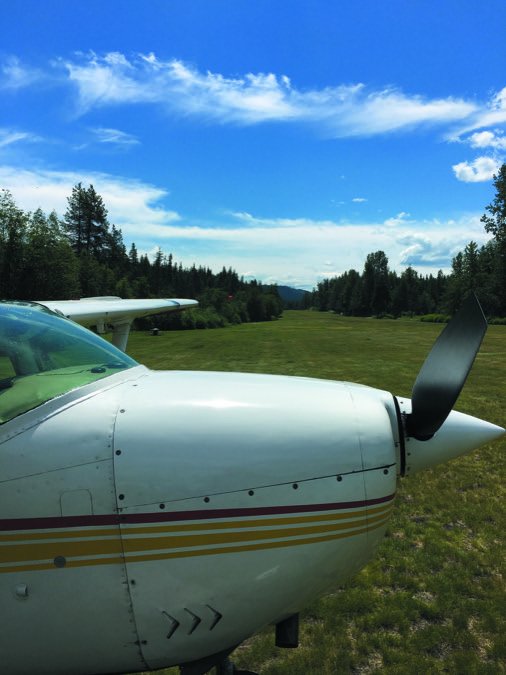
Performance, Handling
If fast is your mantra, the Skylane won’t be your airplane. Flogged to the limit, these are 135-knot airplanes, but more like 130 knots burning about 12 GPH. Range varies with year and tankage, of course, but typically, you can easily fly 900 still-air miles in the 88-gallon versions. That’s more endurance than most owners can muster.
Skylanes are prized for short and rough field ops and deservedly so. Longtime reader David T. Chuljian flogs his L-Model ‘Lane into the Idaho outback with good results.
The prop is well clear of the ground and the gear is high enough to keep antennas out of the muck. If need be, the wheelpants can be removed. But still, it ain’t no traildragger. The nosegear will take some hits on rough strips.
A late-model 182 will get over a 50-foot obstacle in only 1115 feet; add a third more for safety margin and you’re still comfortably under 2000 feet. Initial rate of climb is good, thanks to the high horsepower, but it was better in the early models than the later ones, thanks to significantly higher gross weights.
But later models—the 182P and forward—have greater fuel capacity and higher gross weights and thus offer more loading/range flexibility. This, more than any other factor, makes the Skylane a first choice as a family airplane. It’s not much good to blaze along at 160 knots if you can only carry three people.
Although the CG range in the 182 series is adequate, the airplanes tend toward forward CG; ballast or bags in the baggage compartment help. Speaking of which, the baggage compartment is large and easily accessible through an exterior door. (The seals, when old, may leak and should be replaced.)
Handling? We’re not talking BMW-like. The 182 is a big, stable airplane and it takes some effort to break it loose from anything other than straight and level. And even if you do, its draggy profile means that speed builds slowly enough that only a somnambulant pilot could lose it in a dive. The Skylane is heavy in pitch, so timely trimming is a must, especially prior to or during the landing flare. Get lazy in the flare and the Skylane can slam the nosegear onto the pavement, buckling the firewall and leading to a huge repair bill. Roll forces in the 182 are nothing unusual; think of a Skyhawk with stiff cables. In a turn, the Skylane will want to overbank if left alone but so slowly that you should never get behind it.
As far as roll trim goes, fuel load and balance are important in the 182, particularly in airplanes with long-range tanks. The fuel system will self-siphon between tanks if the airplane is not parked on a level surface, so it’s possible to have an imbalance that won’t improve in flight. Even Cessna’s excellent L-R-Both fuel selector won’t prevent the tanks from draining at different rates unless a single tank is selected.
Transitioning from a Piper or smaller Cessna to a Skylane is a Ralph Kramden experience: You’ll definitely feel like a bus driver, albeit a regal one. The seats are high and upright and relatively comfortable. Although visibility is good forward and out the windows, the panel and glareshield are tall, requiring short pilots to use a booster seat. Heating is good for the front-seat passengers, less so for the rear. Wing root vents provide plenty of ventilation but also leak air during the winter, leading some pilots to tape the inlets. Cessna fixed this in the newest Skylanes, which are tight, quiet and warm.
Engine, Maintenance
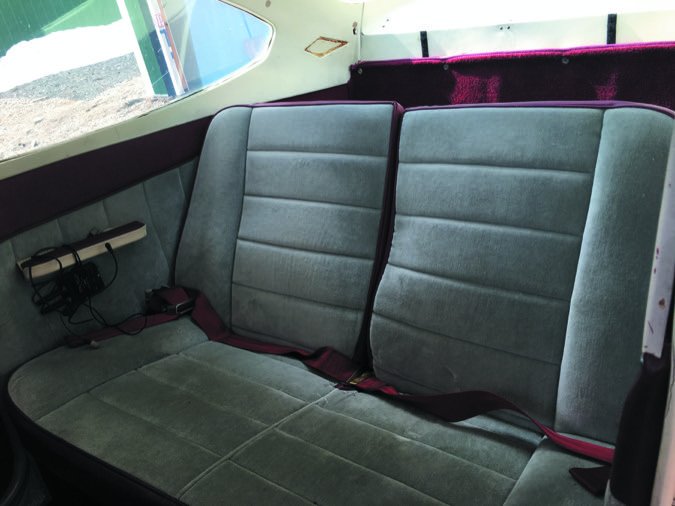
In all of general aviation, there are perhaps a handful of engine-airframe combinations that are nearly perfect. The 182/O-470 pairing is one of them. Four variants of the engine were used: the L, R, S and U. The S (1975-1976) has been the most troublesome because of its revised piston ring configuration, intended to cope with the introduction of low-lead fuel. The U variant (1977-on) is desirable because of a 2000-hour TBO, though earlier engines are upgradeable from their 1500-hour TBO. It’s a rare Continental that makes it to TBO without some form of top overhaul but as big displacement engines go, the O-470 is more likely than most to get by without a top.
Because of its high population and simplicity, the O-470 series is relatively inexpensive to overhaul. One persistent weakness of the design, however, is the tendency of the carburetor to ice up. In carb ice conditions, you have to be on your toes in using carb heat—the accident history shows this.
In its singles, Cessna wisely adhered to the KISS theory for the fuel system. But early models still had their problems. The bladder fuel systems found on 1962 to 1977 Skylanes didn’t fit well in the wing bays, resulting in the possible formation of a diagonal wrinkle across the bottom of the bladder. Combine that with water leaks due to deteriorated O-rings in the flush fuel caps and you can see the problem; the wrinkle acts as a dam to trap water that the pilot couldn’t remove during preflight sumping. On rotation, the water would spill over the wrinkle, reach the fuel pick-up and choke the engine on climbout.
The FAA’s response (AD 84-10-01) was to mandate the installation of additional drains and the inspection of the bladders for wrinkles. This is better known as the “rock-and-roll” AD, for it also directed pilots of airplanes not so modified to go out to the wingtip and shake it up and down to get the water to slosh over the wrinkles. This Marx Brothers-like procedure is certain to cause serious doubt in the minds of nervous passengers.
Otherwise, the Skylane is relatively free of serious ADs. A few have cropped up recently, but they’re one-time directives. AD 98-1-14 calls for replacement of mufflers; 98-1-1 mandates inspection and possible replacement of the alternate static air valve. Also of note are 97-21-2, inspection of certain cylinder installations; 97-15-1, replacement of specified cylinders; and 96-12-22, recurrent inspection of the oil filter adapter.
More recently, Continental had issues with valve lifters coming apart and these impacted some O-470s. We’ve researched a summary of ADs against the S-model Skylane. Although the number is seemingly large, none are especially onerous.
Mods, Clubs
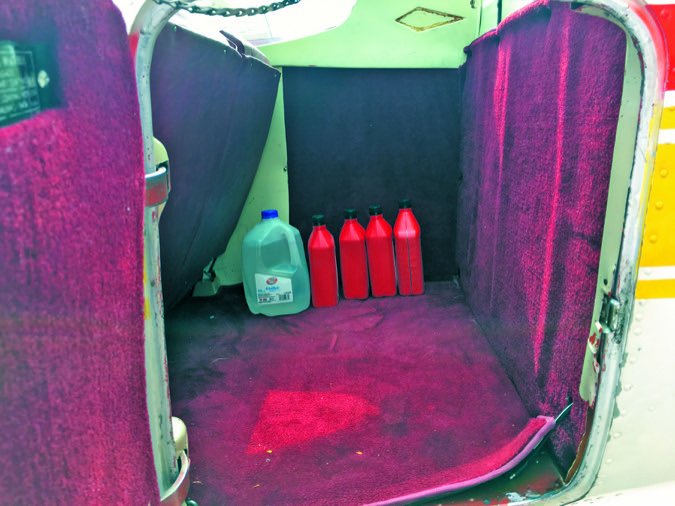
The Skylane may hold the record for having the most modifications available and many of them are good. The big-ticket items are engines: replacing the stock O-470 with a Continental O-520 or IO-550, another TCM product with a good reputation. P.Ponk does the 520: Contact pponk.com or 360-629-4812. Peterson Performance Plus (katmai-kenai.com) offers an impressive STOL package, including the full-up King Katmai mod (we covered it in the January 2013 issue of Aviation Consumer), plus O-470 engine upgrades.
Air Plains (airplains.com, 800-752-8481) does O-520 and O-550 conversions for the Skylane. For another STOL package, see Sierra Industries at sijet.com. Texas Skyways offers the O-550 upgrade; check them out at txskyways.com or 800-899-7597.
There is the Horton Flight Bonus speed package; contact 800-835-2051 or stolcraft.com. More speed mods are available from Knots2U at knots2u.net or 262-763-5100 and Maple Leaf Aviation at 204-728-7618 or aircraftspeedmods.ca. Met-Co-Aire has drag-reducing wingtips; see metcoaire.com and phone 262-763-5100. If you want to slow down instead of speed up, contact Precise Flight (preciseflight.com or 800-547-2558) for a speedbrake kit. Vortex generators are available from Micro Aerodynamics at 800-677-2370 or microaero.com.
If six hours of endurance isn’t enough, see Monarch Air and Development (monarchcaps.com) for aux tanks and improved fuel systems. For more aux tanks, see Flint Aero (flintaero.com and 619-448-1551). Last, don’t forget props from Hartzell; three-blade conversions are available. See www.hartzellprop.com or 800-942-7767.
There are a couple of Cessna groups, including the Cessna Pilots Association at www.cessna.org, as a source for obtaining information before purchasing a Skylane. These guys have been at it for years and know the brand well. Find more support at the Cessna Owner Organization at 888-692-3776 or www.cessnaowner.org.
Smashed Skylanes: Hard Landings
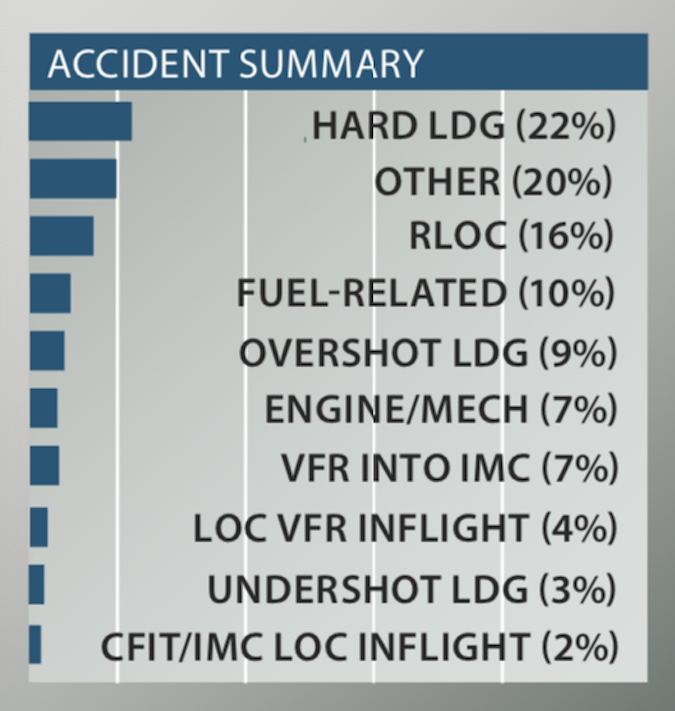
Because of some careful engineering, the 182 series airplanes have a long center of gravity range, allowing the pilot much flexibility in loading without going out of the aft limit, as can be a problem with some competitors. The upshot is that when flying alone, or with just one passenger in the other front seat, the airplane is often near the forward CG limit. That has given the airplane an unjustified reputation for being “nose heavy.”
When any airplane is loaded near the forward CG limit it takes a focused effort on the part of the pilot to raise the nose and actually stop the descent in the flare and then land on only the main gear. The forward CG limit is usually where a pilot cannot flare the airplane to land—being near it requires really pulling on the yoke to get into touchdown attitude.
Our review of the 100 most recent Cessna 182 accidents indicated that a lot of pilots didn’t get the briefing regarding what it takes to flare an airplane loaded well forward—22 of them messed up the flare and hit so hard, or porpoised so badly, that they damaged the airplane. And we mean damaged—the minimum reported was a bent firewall, and several managed to break off one or more gear legs.
When landing a 182 correctly, the nose is up high enough to block visibility directly forward—and it takes a healthy pull to get it there. Not all pilots do it all the time. If you are considering purchase of a 182, assume that there has been damage due to a hard landing, particularly to the firewall—so look for it and ensure that it’s been correctly repaired.
There were 16 runway loss of control (RLOC) accidents—not bad for a tricycle-gear airplane, although two involved 182s that had been converted to tailwheel configuration. Combining the RLOC and hard landing numbers for the Skylane gives an overall control issue landing number of 38. We think that’s high for a nosewheel airplane.
Nine 182 pilots went off the end of a runway, usually after coming down final at the speed of heat and floating down much of the runway before touching down. Three pilots undershot the runway and damaged their airplanes.
While nothing shocks us anymore, we did scratch our heads at the pilot who touched down short of the runway, hit the 6-inch lip of the pavement with the nosewheel, broke it off and then went around. He knew he had a problem so he made the bad decision to land on the grass adjacent to the runway (if you’ve got a gear problem, put the airplane on pavement—it will slide). Sure enough, the broken nosewheel dug into the turf and flipped the airplane.
A total of 50 landing-related accidents tells us that pilots should get a good checkout in how to correctly land a 182 before heading off solo.
We were impressed by the pilot who landed safely after a goose took out the airplane’s windshield.
Modern technology allowed two pilots to hurt themselves: One decided to pick up his iPad while 20 feet up on final instead of flaring. Another flew into ground fog, at night, on long final. He decided to rely on the moving map on his tablet to reach the runway. He crashed a mile short.
Owner Feedback
There are Cessna 182s; then there are Cessna 182s with STC modifications. They are different airplanes. Mine is a 1980 182Q Skylane II that I’ve owned for seven years, operating out of a club-owned grass strip. First, I’ll tell you what it can do, and you’ll think I’m lying. Then I’ll tell you about its mods, and perhaps you’ll believe.
With moderate loads, it typically takes off in about 400 feet and climbs at a steep deck angle at about 1100 FPM. Taking off from a hard-surface 5500-foot runway, it will be 1000 feet AGL at the other end. It lands in 600 to 800 feet with light to moderate braking. It flies comfortably at 40 knots indicated, with no wing drop in shallow turns. It will cruise at 8500 feet at 143 knots true airspeed, burning only 9.5 GPH. It can fly nine hours, with reserves. I know it’s hard to believe.
The mods start with a Texas Skyways O-520 Continental engine with 280 HP and a 2500-hour TBO. This engine will run lean of peak, full throttle, with carb heat and burn only 9.5 GPH. There’s a lightweight starter and Tanis engine heater. Then there are two outboard auxiliary fuel tanks, 11.5 gallons each, by Flint. With the mains at 88 gallons, that’s 111 gallons useable. Then there is a Horton STOL mod, with leading edge cuffs, fences, gap seals and wingtips. For comfort, there’s an Air Mod interior with high-backed adjustable seats and Rosen visors. For safety, new Amsafe airbags are on the front seatbelts. Avionics include a Garmin GTN650, Strikefinder, Garmin 796 with XM Weather, electronic tachometer, JPM engine monitor, Xeon traffic detector and a PS Engineering 8000 audio panel.
On the negative side, this plane had a fresh engine overhaul when I bought it; however, none of the accessories were touched. I have overhauled or replaced just about everything. Useful load is only 1040 pounds. Obviously, it’s no more than a two-place airplane if you fill all the tanks, but that’s been rare. It has good, but dated, original paint. And it burns 28 GPH on takeoff and initial climb.
I operate the airplane for about $125 an hour, allowing for overhaul, insurance, taxes, annual inspection, repairs and $4.50 fuel. I do fly-outs in the U.S. and Canada with the International Fellowship of Flying Rotarians and fly from my North Carolina foothills home to my second home at 03NC, Pilots Ridge Aero Plantation near Carolina Beach and Wilmington. This is a wonderful airplane.
Rankin A. Whittington
Lenoir, North Carolina
I have a 1998 Cessna 182S model that I purchased in 2015. The airplane was expertly repainted by KD Aviation in Newburgh, New York. The original paint was in fairly good shape, but I was itching for a more modern look and borrowed a factory paint scheme from Cessna’s T-series Skylanes.
I had previously owned a Cessna 172, but needed to upgrade as my kids grew and the Skyhawk’s useful load didn’t. I seriously considered a few Cessna 210s before choosing a 182 and although I do occasionally miss not having six seats, this 182 is sized right for the majority of my mission profiles. This airplane came ADS-B Out compliant via an Avidyne IFD540 and AXP340 transponder. I added ADS-B In capability via a NavWorx MLB100 that feeds both the Aspen evolution MFD and Avidyne IFD540 displays. As you can expect, getting three different vendor products to talk to one another was a challenge. I am mostly—but not fully—satisfied with the end result in that I receive ADS-B traffic and weather on the IFD540, but only traffic without velocity vectors on the Aspen MFD.
As a newbie to glass at the time, I appreciated the inclusion of steam gauges in addition to the glass in the panel to aid my transition and provide a comforting backup. This was driven home after witnessing red X’s on the Aspens after a brief encounter with ice on the pitot tube. Granted it was my fault for being slow on the pitot heat, but I thought it odd at the time that attitude would be so dependent on the pitot static inputs.
With an increased reliance on moving electrons, I had Kelly Aerospace install the STC’d backup alternator. I was very impressed with the quality of the components and the peace of mind afforded by this upgrade. In fact, the backup alternator is capable of 95 amps, which makes it more capable than the stock primary alternator. It’s only capable of sourcing 60 amps.
Finally, I contacted Aero Comfort to leather wrap the control yokes and I couldn’t be happier with the result. Surprisingly, what could arguably be the least essential upgrade in the airplane ended being among the most satisfying. I swear the airplane is more fun to manually fly now and I am constantly reminded of this when flying rentals and my friends’ airplanes without this treatment. I would definitely recommend Aero Comfort to anyone considering this luxury.
In terms of determining the cost of ownership, it’s difficult to say. Like many of your readers, I like to upgrade the aircraft in addition to merely maintaining it. Fortunately, I have been blessed in that at least for the time being, I can afford to pursue both. However, scanning through my past annuals I see that the basic annual and the associated maintenance repairs have cost anywhere from $3100 to $3700, and these are New York prices.
Overall, I am very pleased with N182AM. Sure, there are times when I wished for more speed and seats, but I feel this is an airplane I could comfortably grow older with as it teaches me something new each and every flight.
George Scavella
via email

